Aging NHL Greats As New York Rangers

Aging NHL Greats As New York Rangers
Martin St. Louis, RW
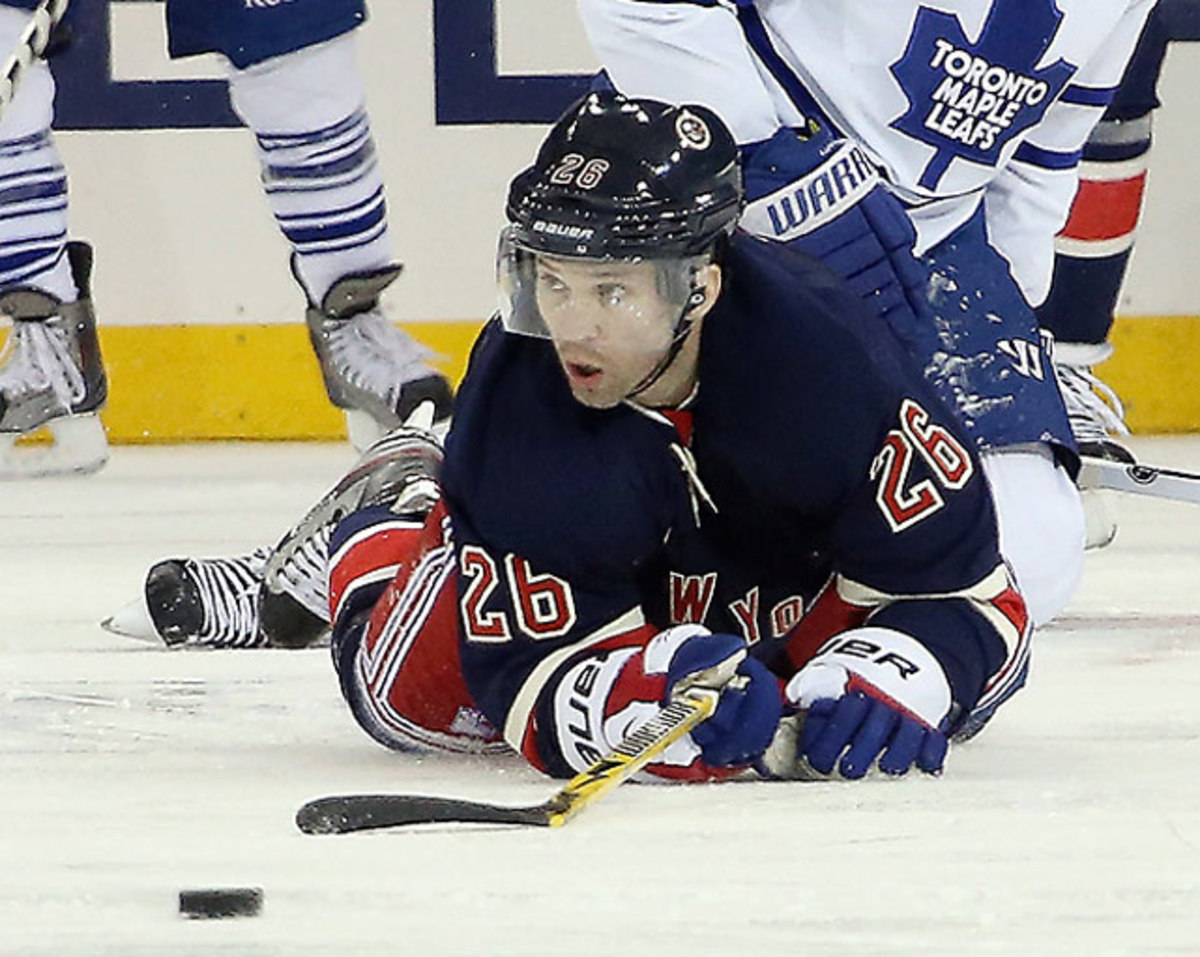
Broadway is a natural home for marquee names, and the Rangers have a long history of acquiring the NHL's biggest. But many were past the age of 30 -- and their primes -- when they arrived. St. Louis, the two-time NHL scoring champion and 2004 Hart Trophy winner, came to New York in March '14 via a trade deadline deal. He was 38, and had spent the previous 13 seasons with the Lightning. His struggles immediately after the trade (three assists in his first eight games) were a reminder that many of the Rangers' most prominent imports did not help secure the Stanley Cup for the Big Apple, but St. Louis later found his game and sparked New York's run to the Stanley Cup Final. Here are some of the most notable stars who were brought in to wear the Rangers' sweater late in their careers. <bold>Notables who did not make our age 30 cutoff:</bold> Eric Lindros (28; acquired 8/20/01); Luc Robitaille (29; 8/31/95); Bernie Nicholls (29; 1/20/90).
Brad Richards, C
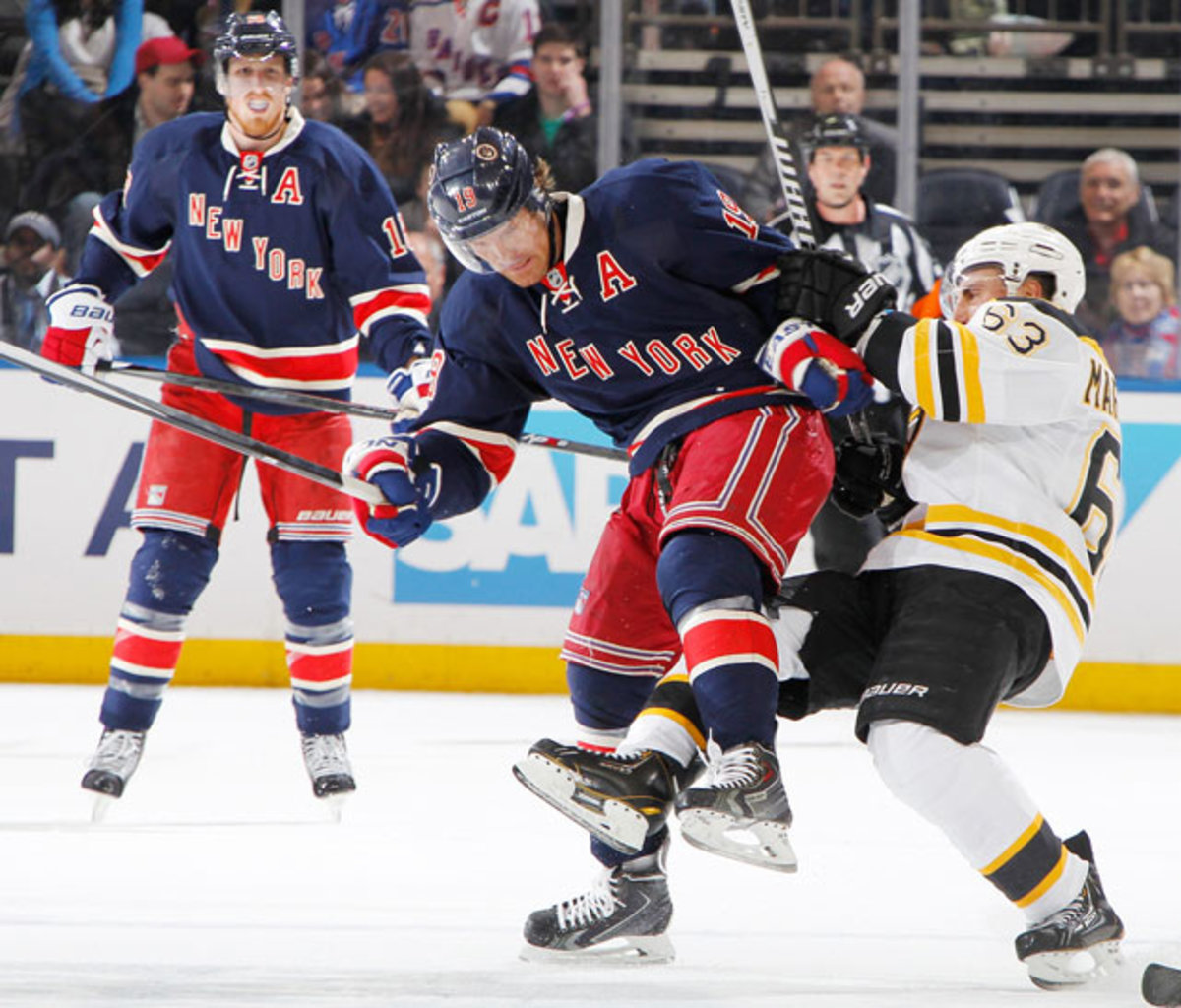
Richards (19) was a plum free agent, prized for his playmaking and power play skills, when he landed a nine-year, $60 million deal with the Rangers at age 31 in July 2011. His résumé included the Conn Smythe Trophy he won when he led the Lightning to the Stanley Cup in '04. The move to New York also reunited Richards with John Tortorella, the coach of Tampa Bay's Cup winning team. Richards, eager to prove himself on the big stage, put up a solid 25-goal, 66-point campaign in 2011-12, and helped the Rangers reach the Eastern Conference finals. But the next season, his game began to decline to the point where Tortorella benched him during the playoffs. Rangers roster in Richards' first season.
Brendan Shanahan, LW
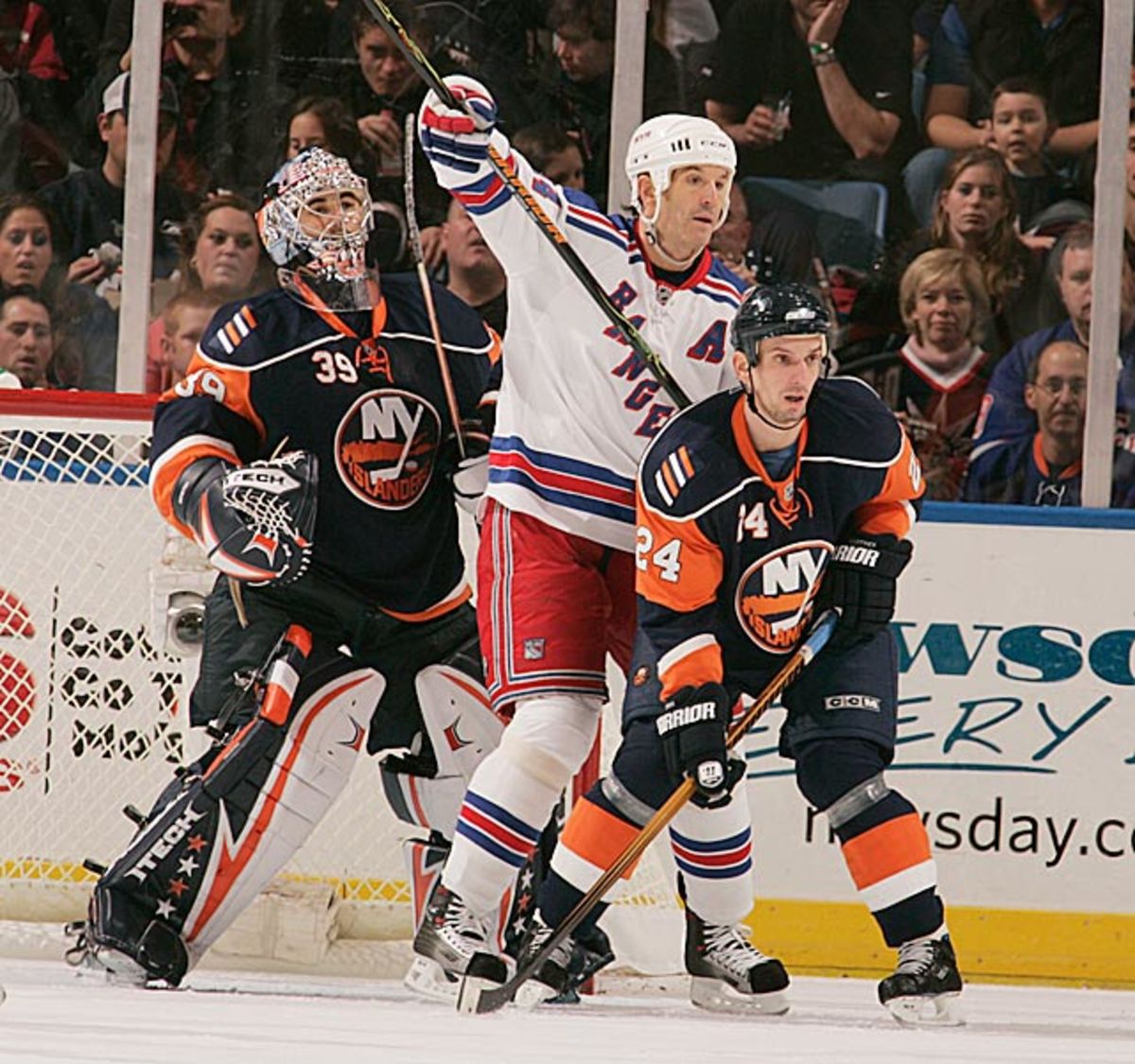
Shanahan (left, in white) signed as a free agent at age 37 in July 2006. The rugged eight-time All-Star scored 29 goals (second most on the team) during the first of his two seasons with the Rangers, both of which ended with New York bowing out of the playoffs in the second round. Nevertheless, Shanahan's play on Broadway was significant: He became the 15th NHL player to reach 600 goals; joined Gordie Howe as the only players in the history of the league to score 25 or more goals in 18 consecutive seasons; and won the Mark Messier leadership award. But his wish for one last Stanley Cup (he won three with the Red Wings) went unfulfilled, and he retired in '09 after a farewell season with the Devils -- with whom he began his NHL career in 1987. Shanahan was inducted into the Hall of Fame in 2013. <bold>Notable Rangers during Shanahan's tenure:</bold> Jaromir Jagr, Henrik Lundqvist, Chris Drury
Jaromir Jagr, RW
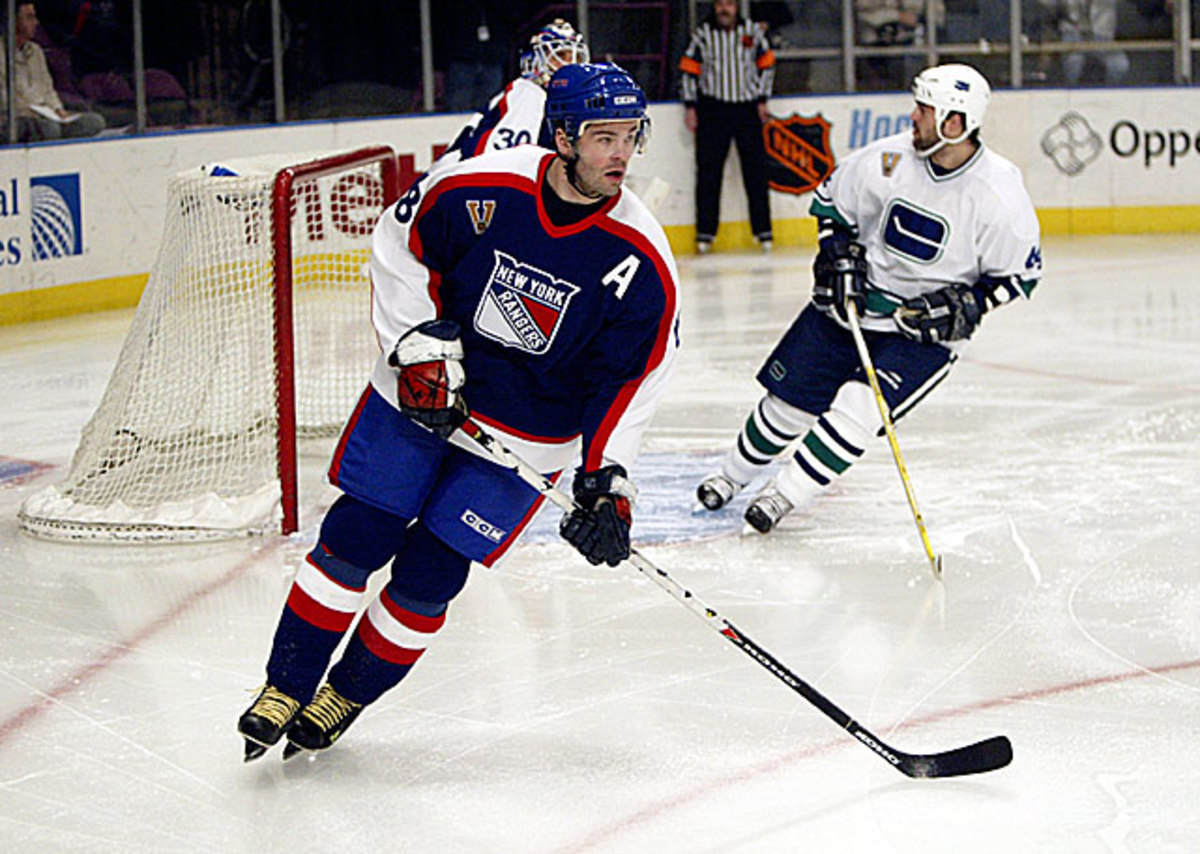
When the Capitals traded Jagr to the Rangers for Anson Carter on Jan. 23, 2004, the five-time scoring champ was almost 32 and had four years left on a $77 million contract that Washington could not afford with a lockout looming. Long coveted by New York, Jagr played for the Blueshirts for four productive seasons. His 54-goal, 123-point campaign in 2005-06 set single-season team records and earned him the Pearson Award as NHL MVP as voted by his peers. The Rangers later named him captain, but the team never made it beyond the second round of the playoffs with him in the lineup. When he was unable to pry a new contract out of New York GM Glen Sather, Jagr departed for the KHL in '08. <bold>Notable Rangers during Jagr's tenure:</bold> Brian Leetch, Eric Lindros, Mark Messier, Brendan Shanahan, Henrik Lundqvist
Pavel Bure, RW
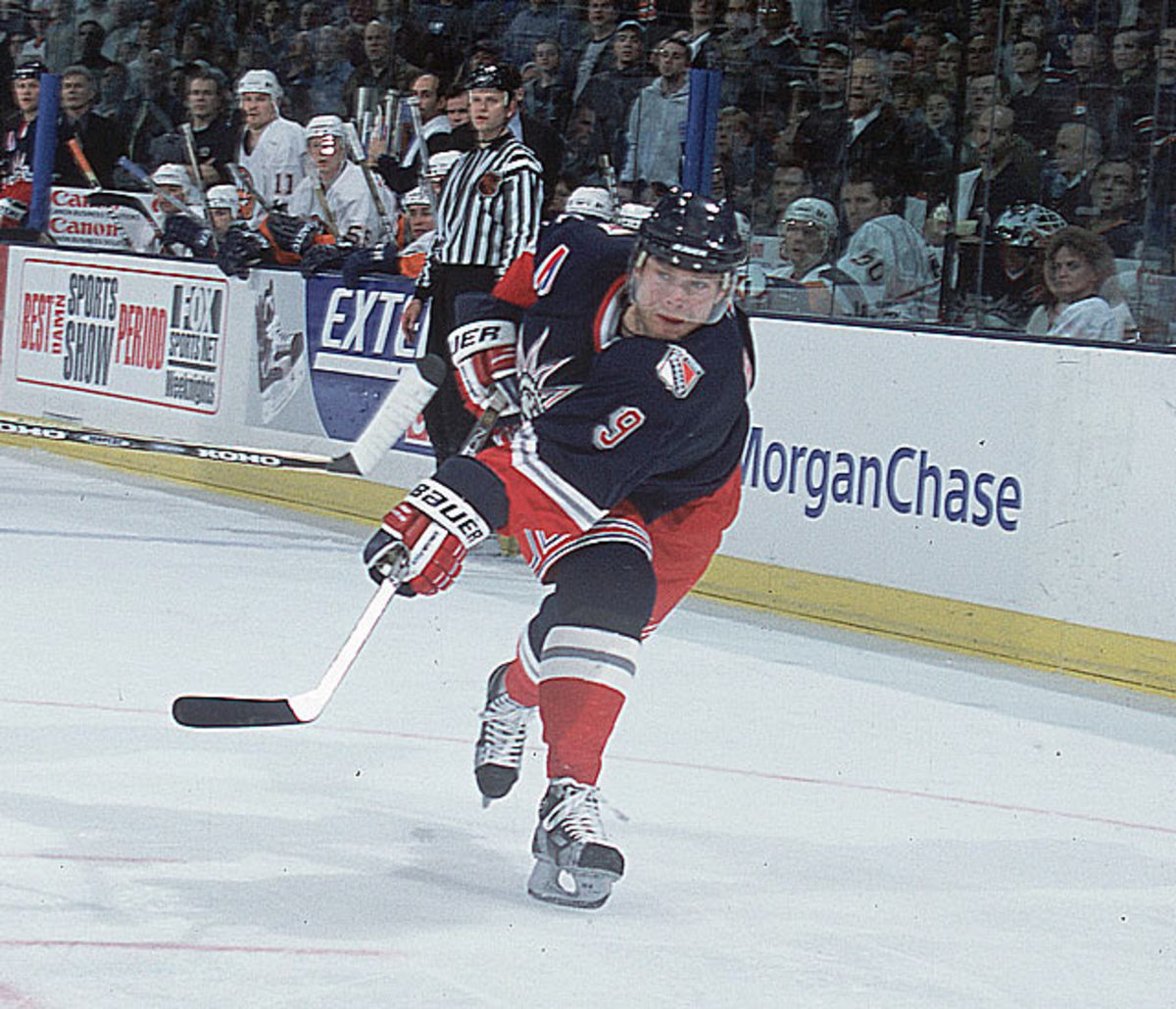
"He's a constant threat," Sather said of Bure in March 2002 after the Rangers' GM had acquired the prolific winger from the Panthers for blueliners Igor Ulanov and Filip Novak, and a parcel of draft picks. "He's someone who can score any time he gets the puck on his stick. He's an artist. He's a superstar." Alas, Sather was talking about the old Russian Rocket. The 31-year-old who showed up in New York was a brittle shadow of his former self, albeit one with a $10 million-per-year deal. Bure, who had scored more than 50 goals in a season five times from 1992-93 to 2000-01, played just 51 games -- and scored just 31 goals -- for the Rangers. The club missed the playoffs in both his seasons in New York. In September 2003, Bure was declared medically unable to continue playing due to a chronic knee injury. He never skated in the NHL again. <bold>Notable Rangers during Bure's tenure:</bold> Mark Messier, Eric Lindros, Brian Leetch, Mike Richter, Theo Fleury
Theo Fleury, RW
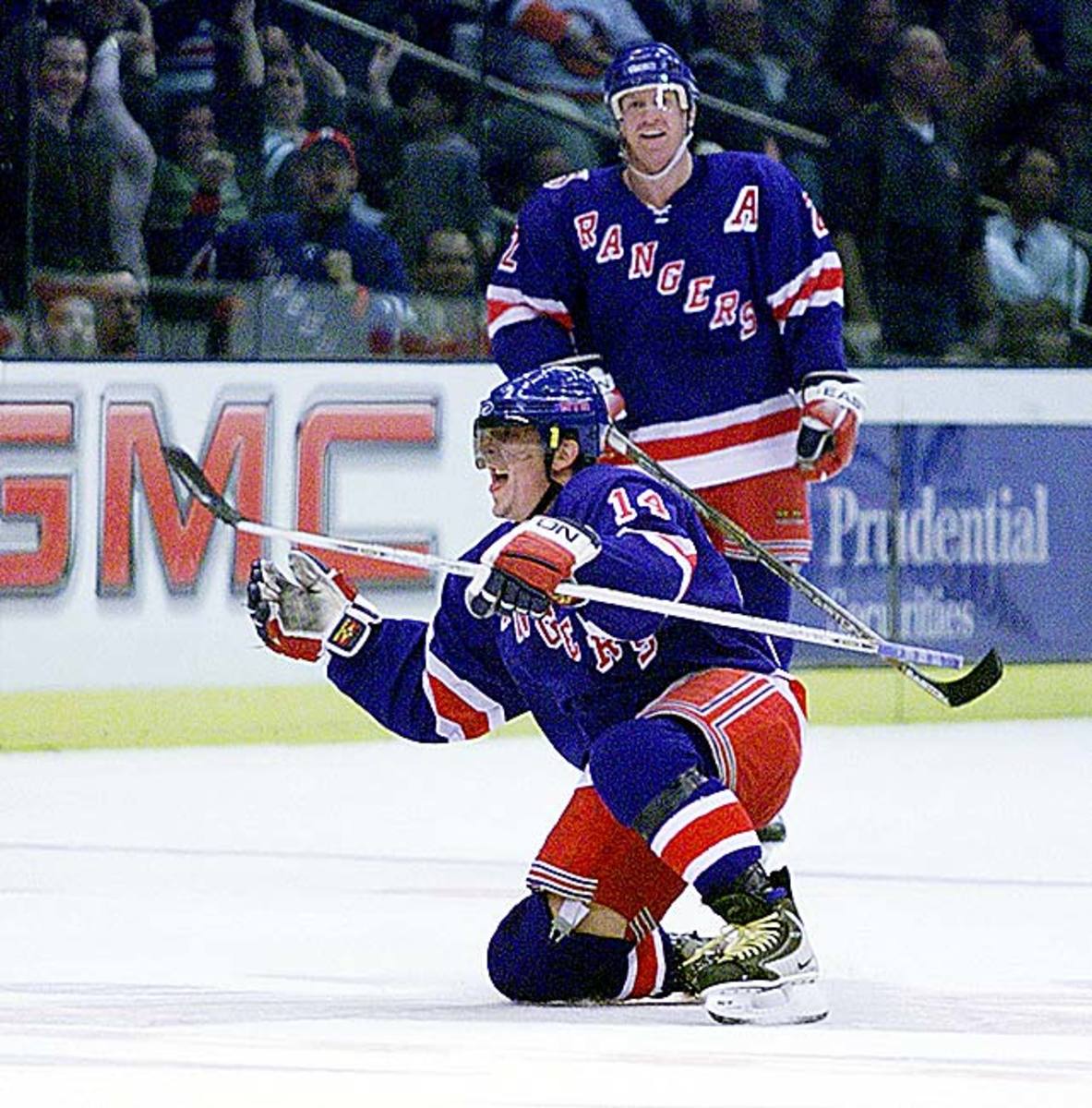
The feisty, diminutive Fleury (14), 31, was a six-time All-Star when the Blueshirts signed him in July 1999. He'd spent most of his 11 NHL seasons in Calgary, winning a Stanley Cup with the Flames in '89, before playing briefly for the Avalanche. At the urging of then Ranger Wayne Gretzky, Fleury signed a four-year deal with New York that was worth as much as $10 million (and which included a no-trade clause). He led the team in assists in his first season. But sadly, his three years on Broadway devolved into what he later described as "a nightmare" of drug abuse. "The Rangers were like an army of mercenaries," he wrote in his 2009 memoir, <italics>Playing With Fire</italics>. "It was all about the money." New York traded Fleury to the Sharks in June '02. He retired a year later. <bold>Notable Rangers during Fleury's tenure:</bold> Adam Graves, Brian Leetch, Mike Richter, Mark Messier, Pavel Bure, Eric Lindros
Pat LaFontaine, C
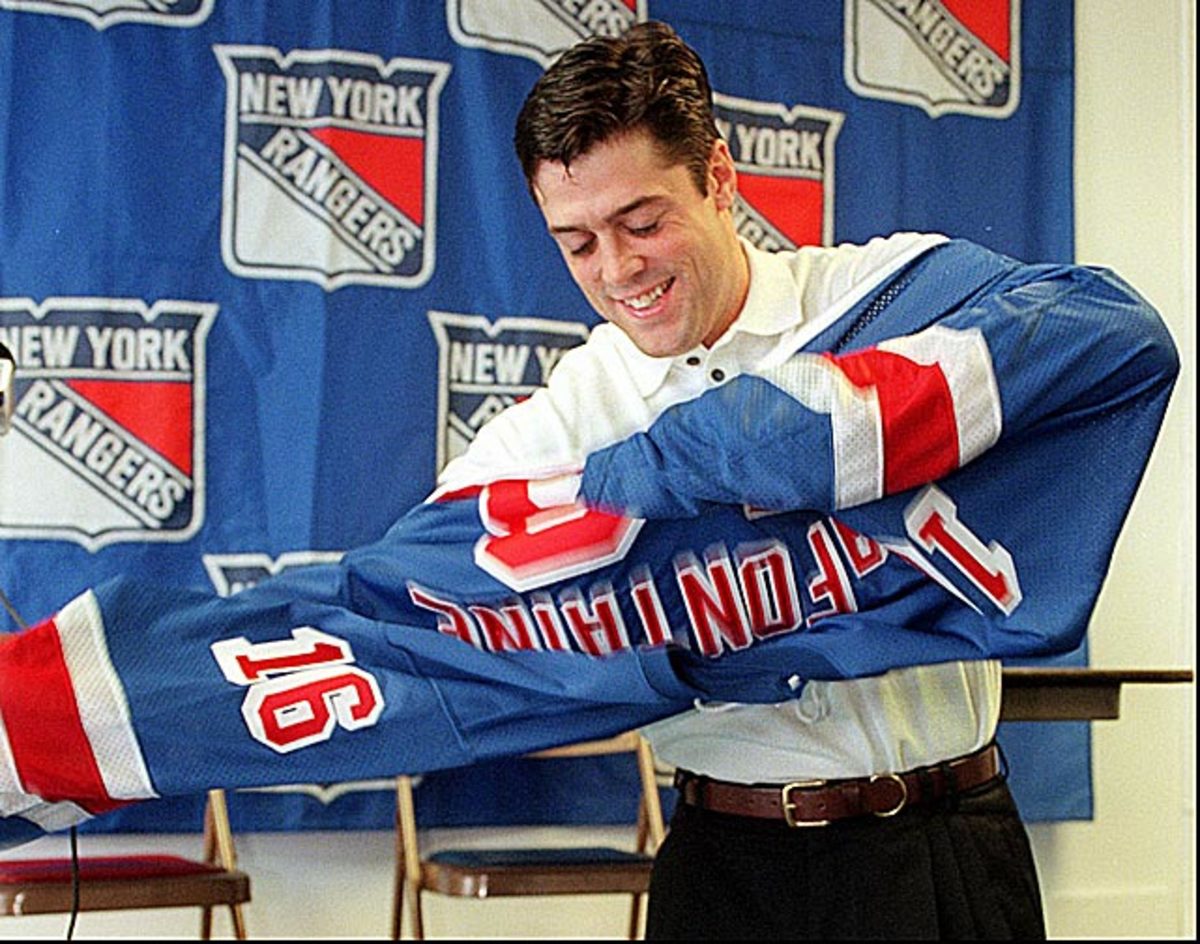
Islanders fans were horrified when their former hero donned the dreaded blueshirt after a trade from Buffalo in Sept. 1997. Unfortunately for LaFontaine and the Rangers, the future Hall of Famer had suffered a string of injuries, including a concussion, that made it all he could do to make it through the season. Nevertheless, he produced a respectable 62 points in 67 games, reached the 1,000 career point mark, and played for Team USA at the Nagano Olympics. Another serious concussion forced him to retire after the season. The Rangers did not reach the playoffs. <bold>Notable team members during LaFontaine's tenure:</bold> Wayne Gretzky, Mark Messier, Adam Graves, Brian Leetch, Luc Robitaille, Esa Tikkanen, Mike Richter
Jari Kurri, RW
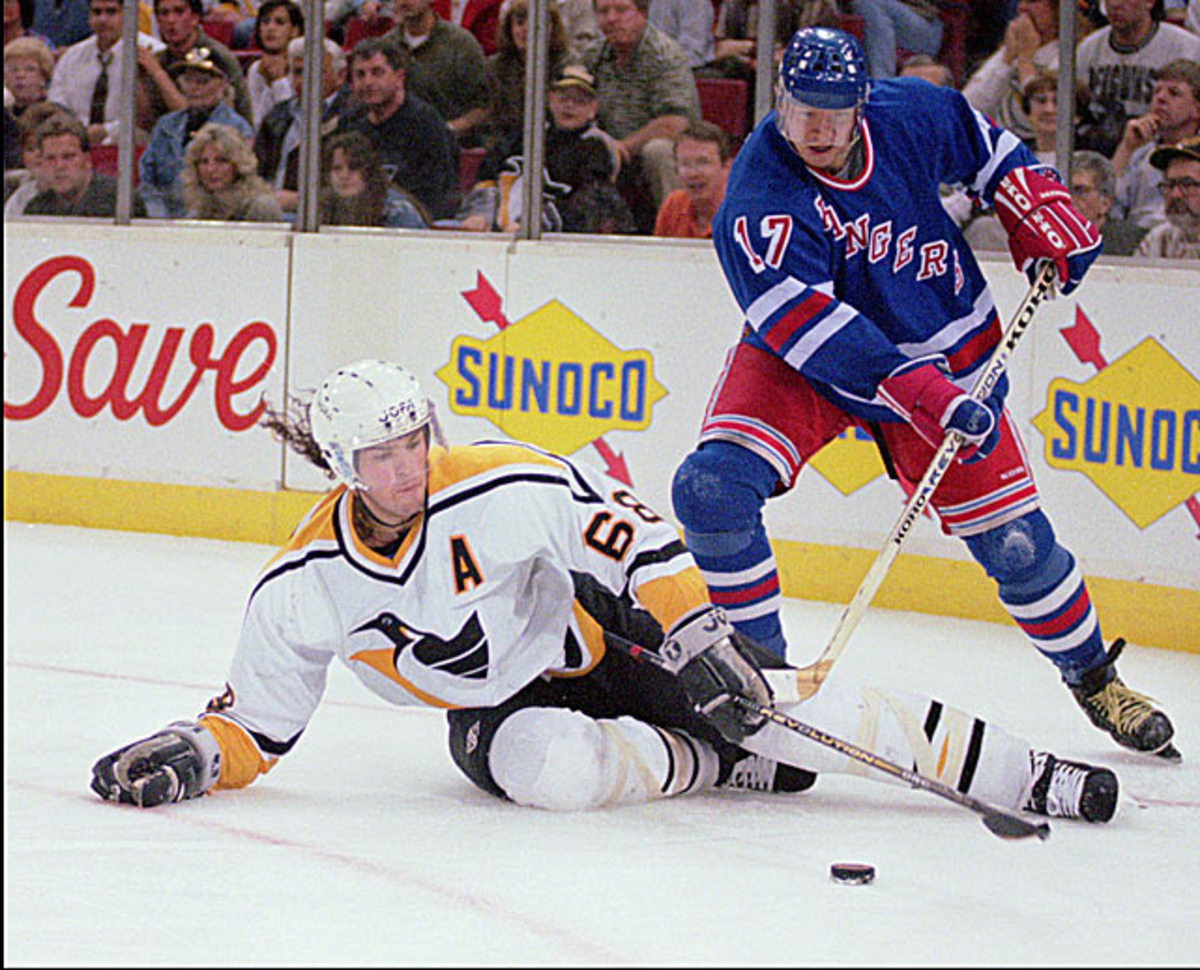
A stretch drive pickup in a March 1996 trade with Los Angeles, Kurri, a five-time Cup champion and future Hall of Famer who'd produced seasons of 52, 71, 68 and 54 goals during his prime in Edmonton, was almost 36 when he became a Ranger. He spent 14 regular season games (1 goal, 5 points) and 11 playoff matches (3 goals, 8 points) with New York, which fell to Montreal in the second round. Even though his old linemate Wayne Gretzky was signed by the Rangers that summer, Kurri left for Anaheim and the chance to play with Paul Kariya and fellow Finn Teemu Selanne. <bold>Notable Rangers during Kurri's tenure: </bold>Mark Messier, Luc Robitaille, Mike Richter, Brian Leetch
Wayne Gretzky, C
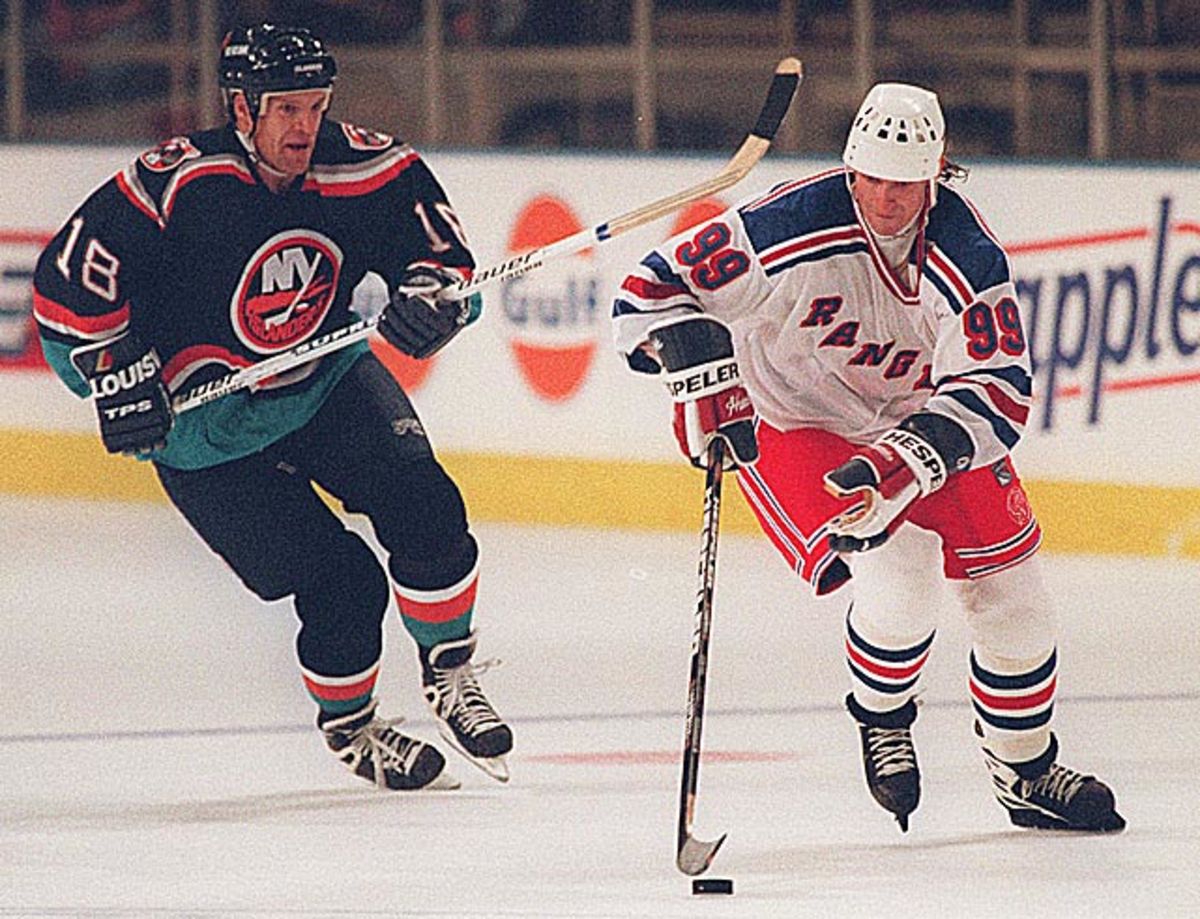
It always seemed like it was only a matter of time before the Rangers landed The Great One. But when he finally arrived as a free agent in July 1996, he was 35 and no longer a prolific goal scorer. Reunited with old buddy Mark Messier and still in possession of his wizardly playmaking skills, Gretzky put up 97 points as the Blueshirts reached the conference finals where any thoughts of hoisting another Cup together evaporated in a five-game loss to the Flyers. Gretzky ended up retiring in 1999 after the Rangers failed to qualify for the playoffs during the final two seasons of his NHL career. <bold>Notable Rangers during Gretzky's tenure: </bold>Adam Graves, Brian Leetch, Mark Messier, Luc Robitaille, Mike Richter, Esa Tikkanen, Pat LaFontaine
Glenn Anderson, RW
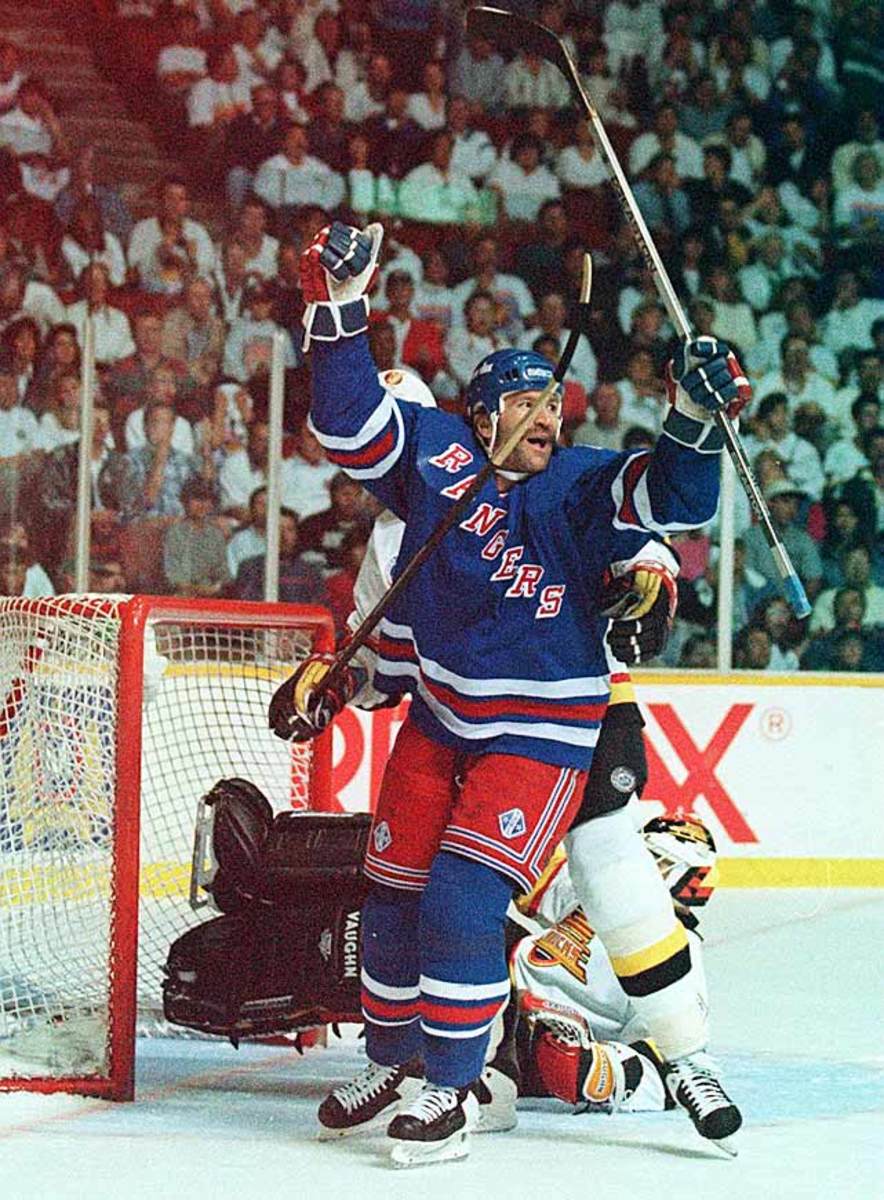
A member of five Stanley Cup teams with Edmonton, the future Hall of Famer with the iron will to win and knack for clutch goals was acquired from Toronto at age 33 on March 21, 1994. He spent the stretch drive (12 games) and playoffs with New York, adding to his silverware collection while contributing three goals (including two game-winners) and six points in 23 postseason games as the Mark Messier-led Rangers ended their 54-year Cup drought. Anderson's time on Broadway was brief. He left for Europe after the season and later signed with St. Louis. When his NHL career ended in 1996, he ranked fourth all-time in playoff points (214) behind Wayne Gretzky, Messier and Jari Kurri. <bold>Notable Rangers during Anderson's tenure: </bold>Mark Messier, Brian Leetch, Mike Richter, Adam Graves, Esa Tikkanen
Esa Tikkanen, LW
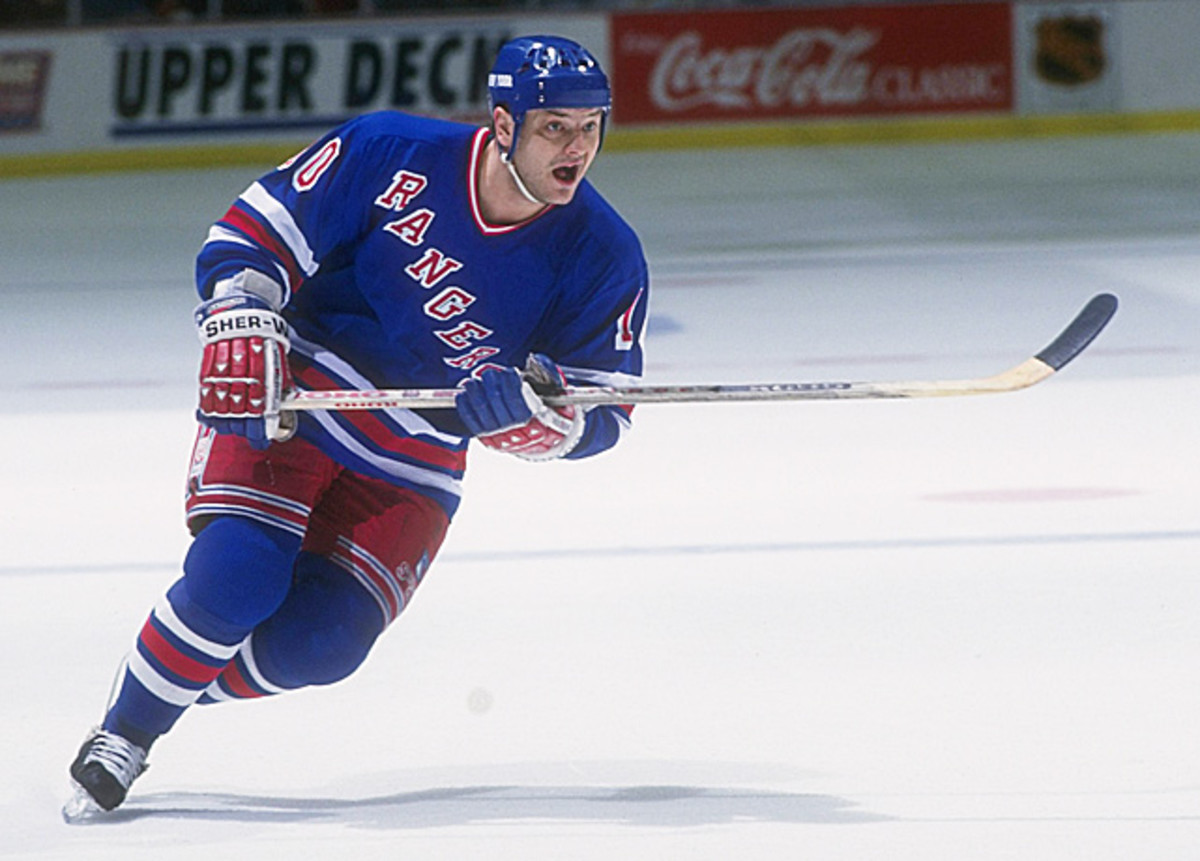
The versatile agitator (aka "The Grate One") who won four Stanley Cups with the Oilers, arrived from Edmonton in a trade for Doug Weight on March 17, 1993. He was 28 and still going strong, but the Rangers failed to reach the playoffs for only the second time since 1977. A valuable member of their 1994 championship squad, he was traded after that magic season, but later returned, once as a 32-year old stretch drive acquisition in 1997 -- he helped the Rangers reach the conference finals -- and in October '98 during his final NHL season when he was slowed by a knee injury and New York was a DNQ. <bold>Notable Rangers during Tikkanen's tenures:</bold> Mark Messier, Wayne Gretzky, Brian Leetch, Mike Richter, Adam Graves, Luc Robitaille
Mark Messier, C
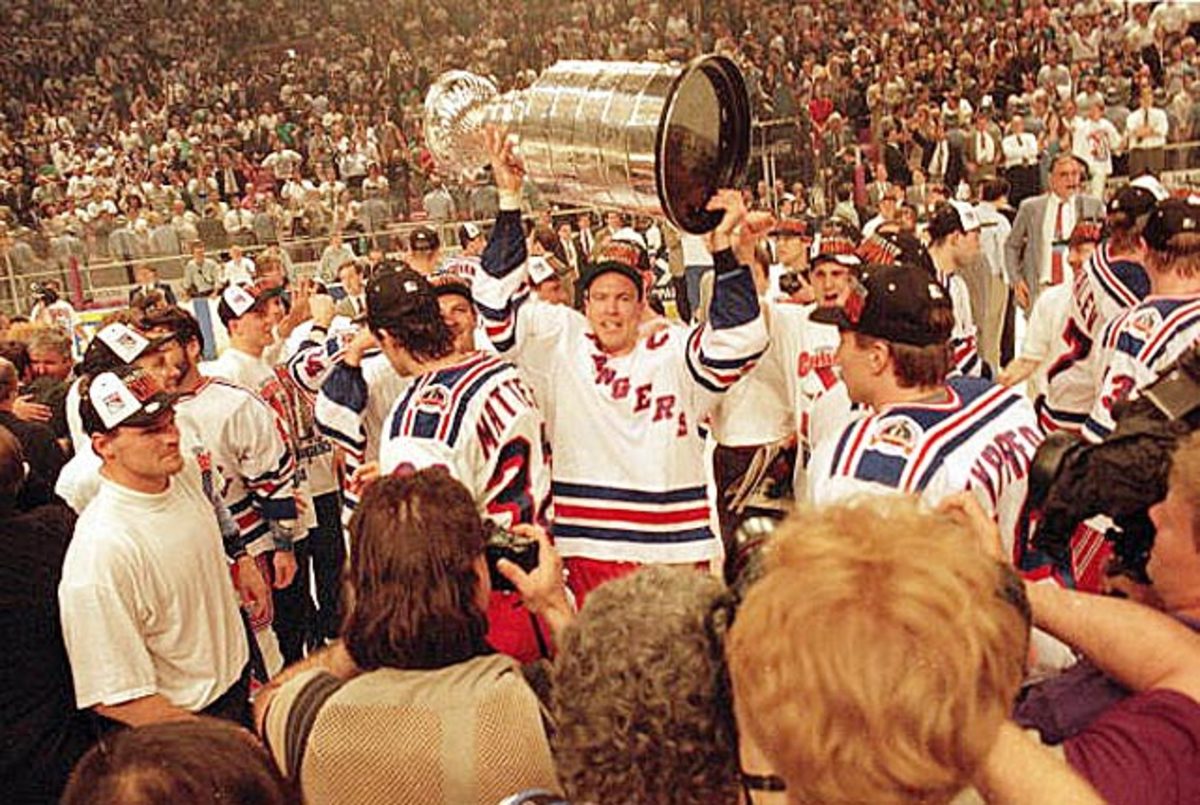
The consummate leader and veteran of five Stanley Cup champions in Edmonton was 30 and still in his prime when the Rangers acquired him in a monumental trade for Bernie Nicholls, Louie DeBrusk and Steven Rice on Oct. 4, 1991. Things went rather well during his first and now legendary six-year tenure on Broadway during which he led the Blueshirts to their first Cup in 54 years before signing with Vancouver in July 1997. His second stint failed to rekindle the old magic. Signed as a free agent in July 2000, the then-39 year old future Hall of Famer spent four more years on Broadway skating for a string of playoff DNQs before retiring in 2004 at age 43. <bold>Notable Rangers during Messier's tenures:</bold> Mike Richter, Brian Leetch, Adam Graves, Mike Gartner, Glenn Anderson, Esa Tikkanen, Jari Kurri, Wayne Gretzky, Luc Robitaille, Theo Fleury, Pavel Bure, Eric Lindros, Jaromir Jagr
Mike Gartner, RW
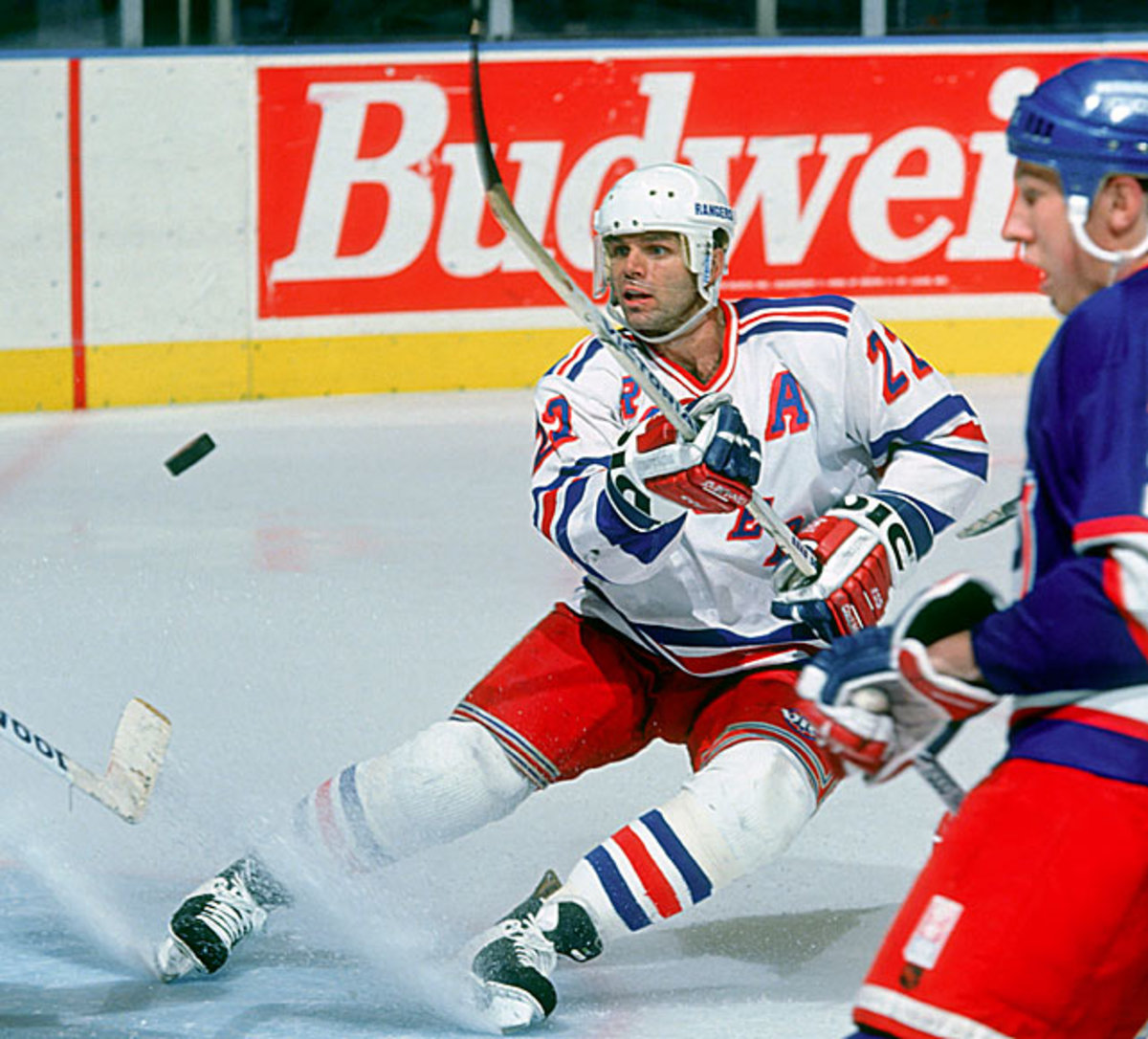
The future Hall of Famer, one of the NHL's finest skaters and scorers, was acquired by the Rangers from Minnesota in March 1990. A fan favorite, Gartner helped the Rangers win their first division title in 48 years and became the first Blueshirt to post 40 or more goals in three consecutive seasons. He was New York's leading postseason scorer in 1992, after a regular season in which he became the first NHL player ever to reach 500 goals, 500 assists and 1,000 points during the same campaign. Unfortunately, the Rangers never got beyond the second round during his time with them and he missed a chance to hoist the only Cup of his 20-year career when he was traded to Toronto for Glenn Anderson during New York's 1994 championship drive. <bold>Notable Rangers during Gartner's tenure:</bold> Brian Leetch, Bernie Nicholls, Mike Richter, Adam Graves, Mark Messier, Esa Tikkanen, John Vanbiesbrouck
Guy LaFleur, RW
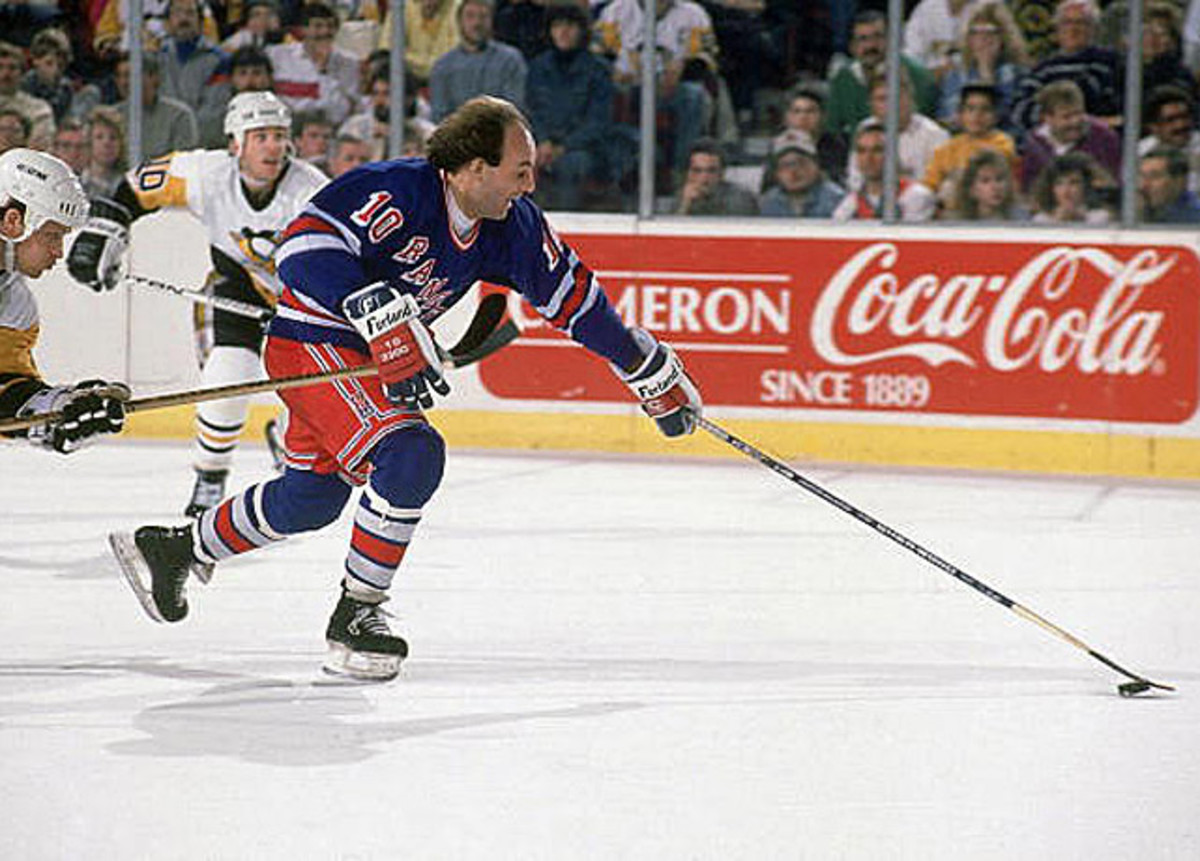
The legendary "Flower," one the greatest and most colorful wingers of all time, came out of a three-year retirement for an NHL encore on Broadway in Sept. 1988 at the ripe old age of 37, thus becoming the first active Hall of Famer since Gordie Howe. A five-time Cup winner, three-time scoring champion, two-time league MVP, and 1977 playoff MVP during his 14 years with Montreal, Lafleur had enough left to put up 18 goals and 45 points in 67 games while helping the Rangers return to the playoffs after a one-year absence. New York was swept by Pittsburgh in the first round and Lafleur signed on with the Quebec Nordiques that summer, concluding his illustrious career with them in 1991. <bold>Notable Rangers during Lafleur's tenure:</bold> Marcel Dionne, Brian Leetch, John Vanbiesbrouck
Marcel Dionne, C
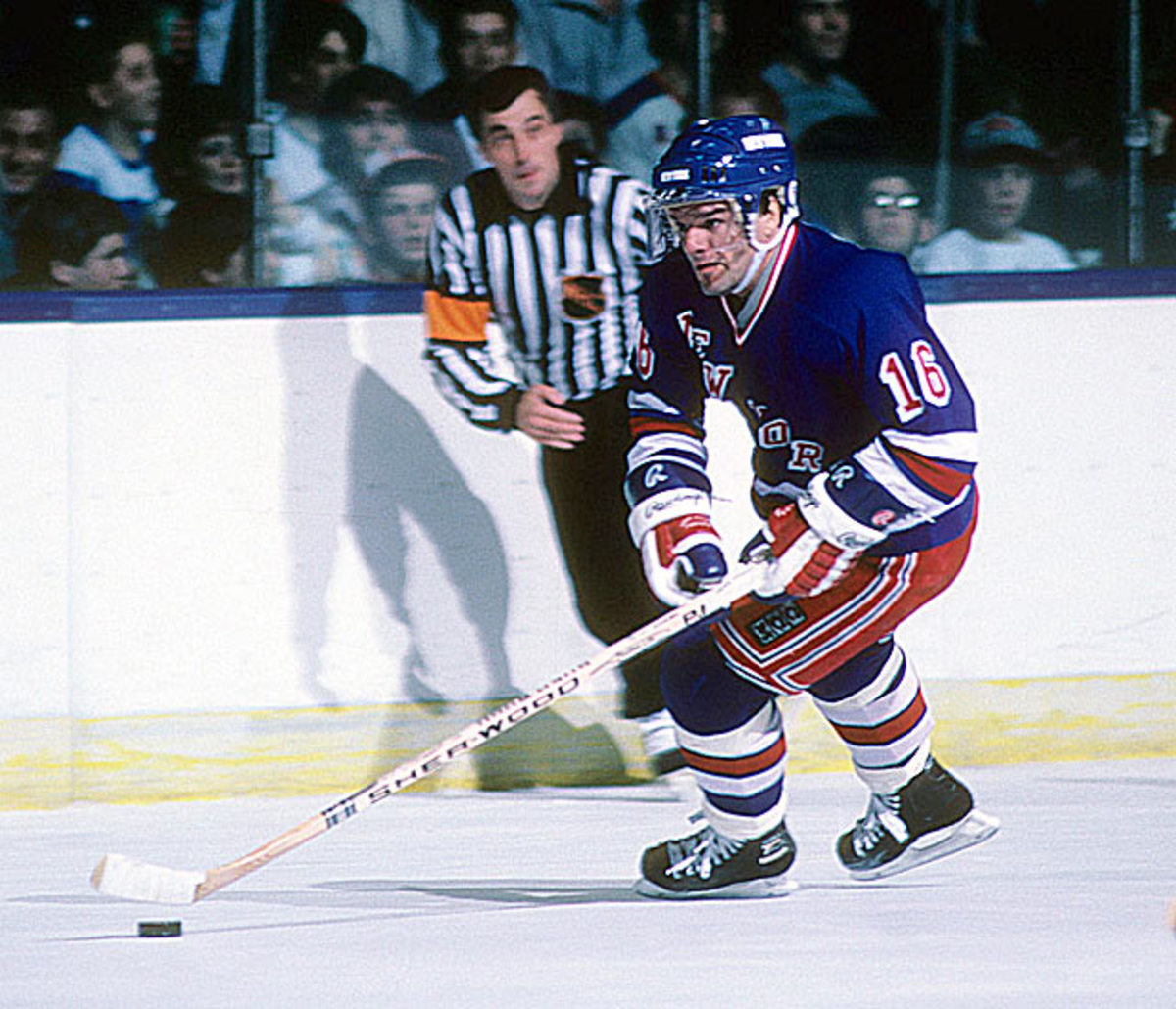
The brilliant scorer and playmaker was brought in from the Kings with a stretch drive trade in March 1987. At 35 and in his 16th season, the six-time 50-goal man added major starpower to a lineup that included such Broadway stalwarts as Ron Duguay, Ron Greschner, Pierre Larouche, Don Maloney, James Patrick, and John Vanbiesbrouck. Dionne squeezed out a goal and an assist in six playoff games before the Rangers were dispatched to the golf course by the Flyers. New York failed to qualify the following season even though Dionne lit the lamp 31 times (second on the team behind Walt Poddubny's 38). Joining forces with ex-Les Glorieux geezer Guy Lafleur for 1988-89, Dionne helped the Blueshirts return to the postseason where they were swept by Pittsburgh, thus concluding his Hall of Fame career. <bold>Notable Rangers during Dionne's tenure:</bold> Ron Duguay, John Vanbiesbrouck, Brian Leetch, Guy LaFleur
Phil Esposito, C
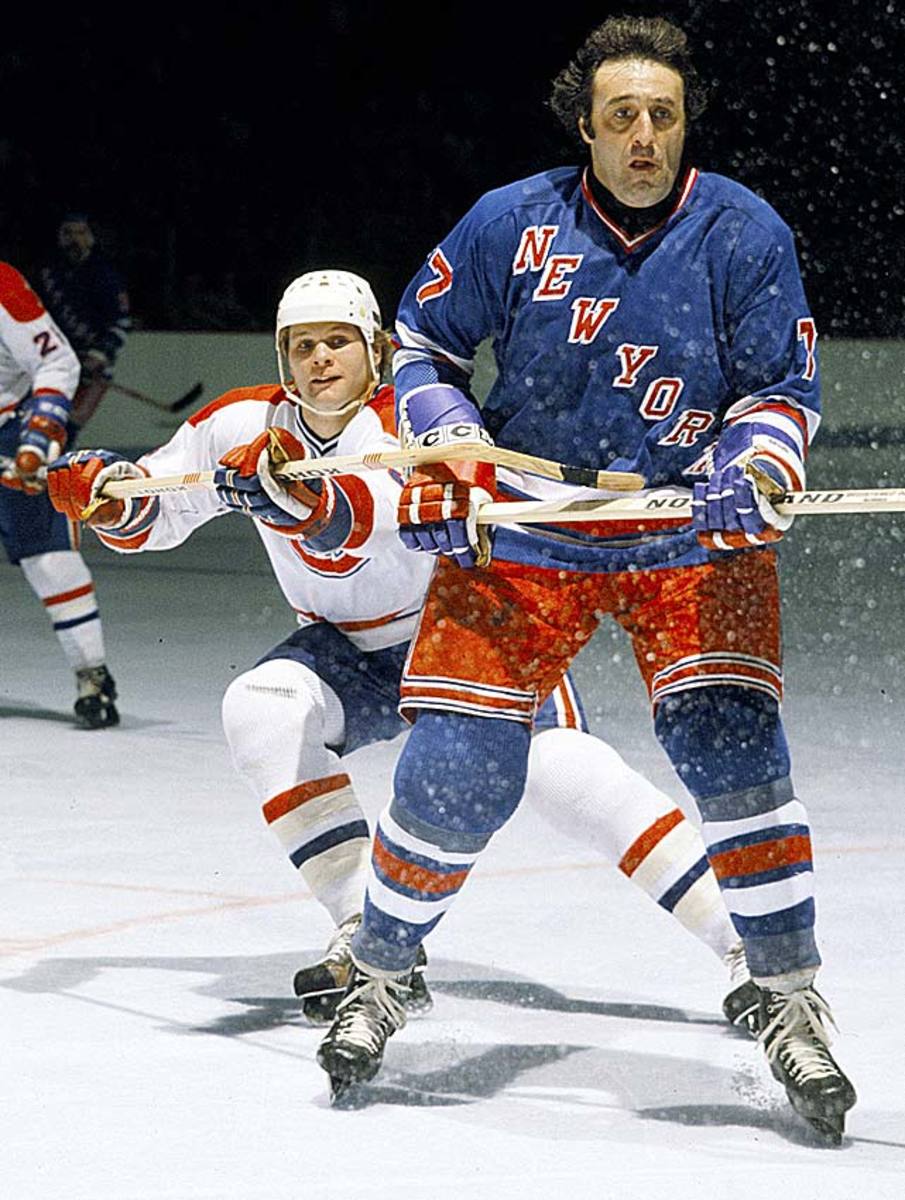
When the Bruins icon learned he'd been traded to the Rangers in November 1975 after eight seasons with Boston, his first reaction was to jump out of his hotel window. But the charismatic five-time scoring champion, who was 33 at the time of the deal, became a huge hit in New York during his six seasons as a Blueshirt. Anointed captain, he topped the team in scoring four years in a row although he never reached the 50-, 60- and even 70-goal heights he'd enjoyed as a Bruin. At 37, he produced a 42-goal season and led the Rangers to a major playoff upset of the Islanders and a berth in the Stanley Cup Final. He retired as a Hall of Fame certainty during the 1980-81 season and later spent three years as the Rangers' GM (1986-89), bringing Marcel Dionne and Guy LaFleur to town. <bold>Notable Rangers during Esposito's tenure:</bold> Rod Gilbert, Ed Giacomin, John Davidson
Berine "Boom Boom" Geoffrion
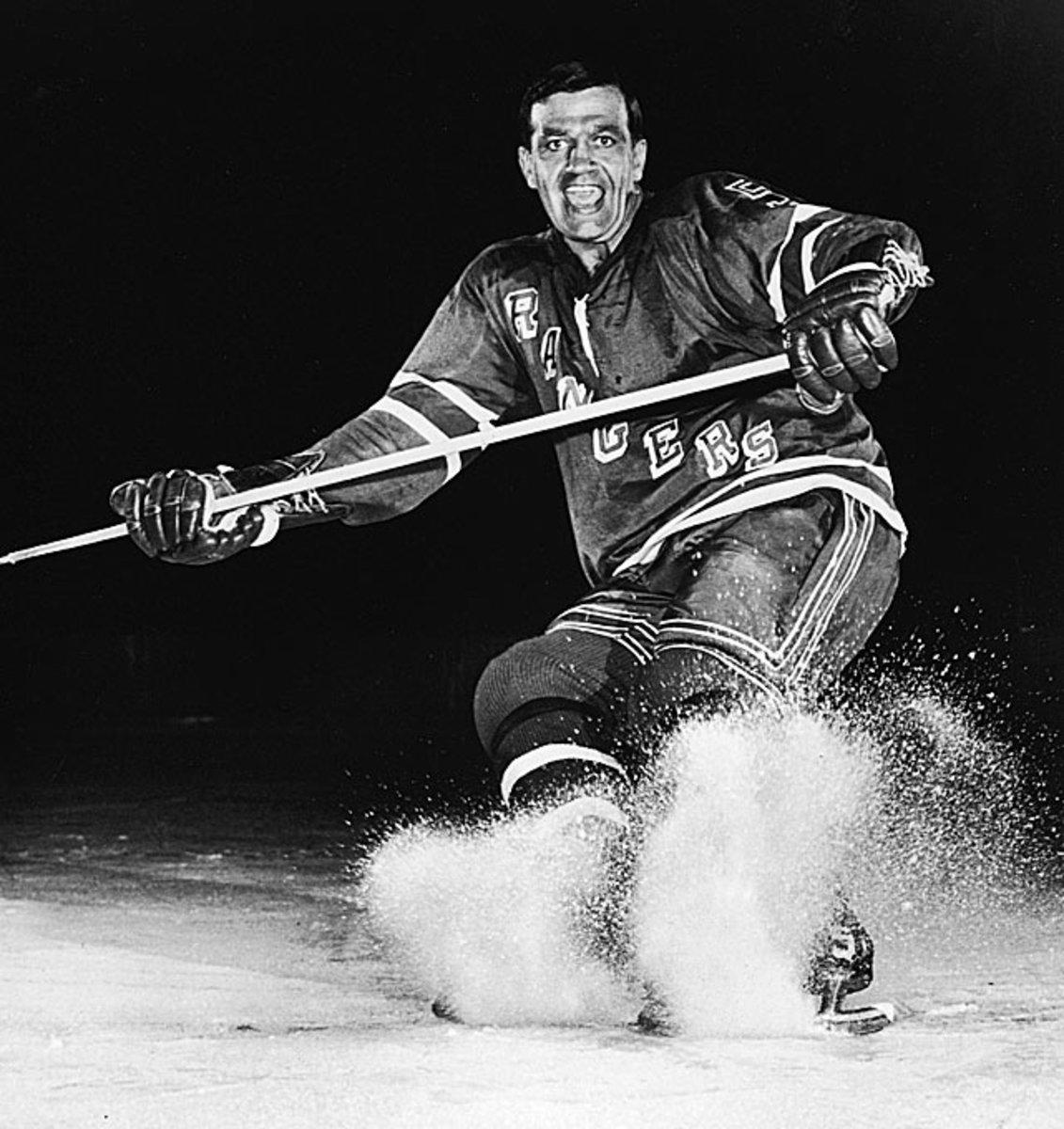
Itching to return to the ice, the legendary winger was 35 when the Rangers signed him in June 1966 after he'd spent two years coaching the Canadiens' farm team in Quebec City. A former two-time NHL scoring champion and league MVP, Boom Boom (so nicknamed for his hard shot and fiery personality) had skated with Montreal for 14 years and won six Stanley Cups. Fans in New York loved him during his two seasons as Ranger, though his best output (17 goals, 42 points) was a far cry from his prime years, but he helped the Rangers return to the playoffs where they swept by his old team in the first round in '67 and eliminated by Chicago in '68. After hanging up his skates, Geoffrion coached the team for half of the 1968-69 campaign. <bold>Notable Rangers during Geoffion's tenure:</bold> Rod Gilbert, Ed Giacomin, John Ratelle
Jacques Plante, G
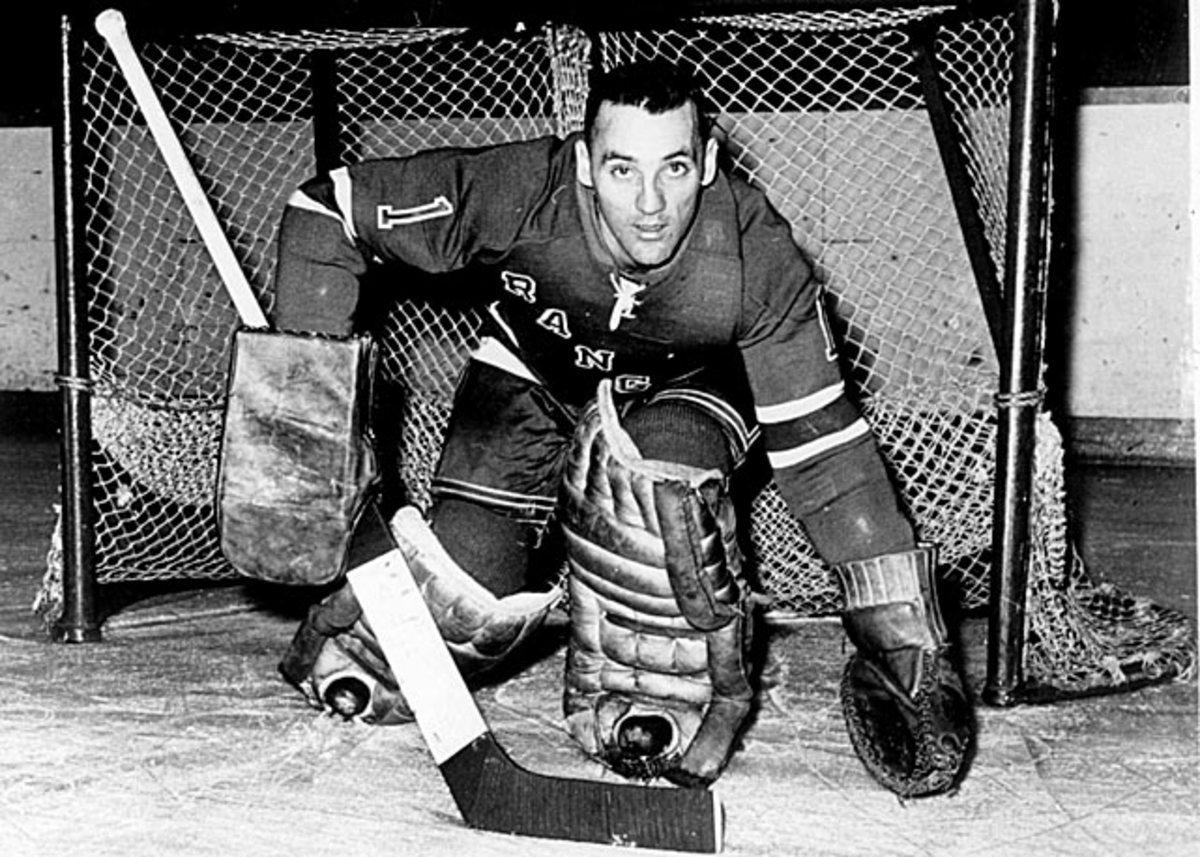
One of the greatest netminders of all time and the man who famously popularized the use of the goalie mask was 34 when the Rangers acquired him from Montreal in a multi-player trade in June 1963. Plante's achievements with the Canadiens included six Vezina trophies, a Hart, and six Stanley Cups. With the Rangers, he was saddled with losing records and career-high GAAs during his two seasons playing for a team that did not see the postseason. He retired in 1965, but returned to the NHL with expansion St. Louis three years later, twice helping the Blues reach the Cup final and winning one more Vezina before retiring for good in 1975 at age 46. <bold>Notable Rangers during Plante's tenure: </bold>Rod Gilbert, Jean Ratelle, Dick Duff, Doug Harvey
Doug Harvey, D
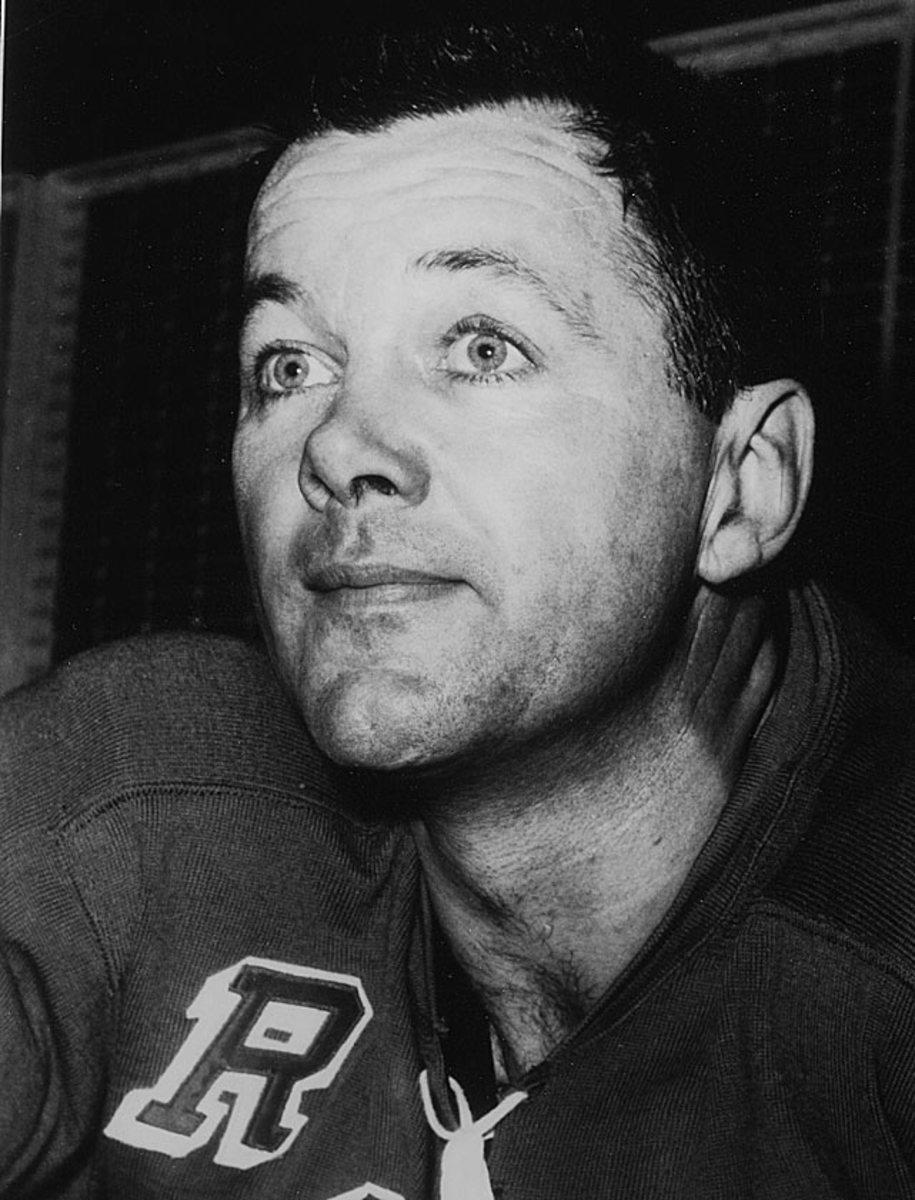
The game-changing Hall of Fame blueliner -- a Bobby Orr prototype during his prime years in the 1940s and '50s -- became a Ranger at age 36 in June 1961. An 11-time All-Star and winner of six Norris Trophies, Harvey was a cornerstone of Montreal's dynasty that rolled to a record five straight Stanley Cups (1956-60). He was a player-coach during his first season in New Your, winning the Norris and helping the Rangers reach the playoffs for the first time in four years. (They fell to Toronto in the first round.) He shed his coaching role the next season, but New York didn't qualify and he left for the AHL's Quebec Aces after appearing in only 14 games in 1963-64. <bold>Notable Rangers during Harvey's tenure:</bold> Andy Bathgate, Rod Gilbert, John Ratelle, Gump Worsley <bold>Other Hall of Famers from the Original Six era who came to Broadway late in their careers:</bold> Max and Doug Bentley (1953-54); Howie "Stratford Streak" Morenz (1936-37).
